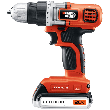Troubleshooting a Garage Door
Written by Lee Wyatt (last updated April 24, 2020)
Garage door openers are a wonderful thing that can save you a lot of time and effort, and generally make life easier. However, there are times when this isn't the case, such as when a garage door doesn't work like it should. When you are faced with such as situation, then you need to begin troubleshooting. Troubleshooting a garage door is a fairly easy task, as long as you follow these guideliens.
- Test your batteries. Use a normal battery tester that you can pick up from places like Radio Shack or Home Depot for about $6. This will help you to not only test the battery strength, but also the strength of the signal of the beam.
- Check the remote. If your battery life is still good, check the "dip switch" settings on your remote against those of the wall unit. People love to play around with these things for some reason, so there is always the chance that this could have been changed. Record the new settings in your owner's manual.
- Check for interference. If steps one and two check out as good-to-go, look for any equipment items that may have been stored near the opener unit. Such items as electronic pest repelling plug-in units, bug zappers, old home electronic units and so on can all interfere with the remote signal. Change the dipswitch to match what they should be if they were out of whack.
- Check the lens. Take a look at the lens on the motion activated unit near that is near the floor by the door. Some units are designed to set off a rapid blinking off the ceiling unit as an error code that will ignore your remote. Clean off the lens by using glass cleaner and paper towels, verify the alignment, and then test using the wall mounted unit.
- Check the tracks. Verify the solidity of your door tracks, one side at a time, for proper alignment. Secure any ceiling mounts that may need tightening down, and ensure that all fasteners are properly tightened. Slight twisting or wobbling is enough to cause the ceiling unit to react to an error code that ignores the remote signal and forces the door to close down.
- Check your wiring. Disconnect the power to the ceiling unit, and verify that all the wiring to the ceiling unit has not corroded, and that a solid connection exists. Frequently a slight wiggle of each individual wire will reveal a wire that has broken. If necessary, strip the wire and reconnect. Most people fail to realize that the vibration of most door opener units will cause the wires to break. Reconnect the power, and test from the wall mounted unit.
- Grease tracks, if necessary. Sparingly use automotive "white grease" on the tracks and roller axis to prevent binding. A door that cannot travel freely can cause an error message to be generated, and force the door to stop responding to your remote. Again, test from the wall mounted unit.
Author Bio
Lee Wyatt
Contributor of numerous Tips.Net articles, Lee Wyatt is quickly becoming a regular "Jack of all trades." He is currently an independent contractor specializing in writing and editing. Contact him today for all of your writing and editing needs! Click here to contact. Learn more about Lee...
Perfect Pizza
Pizza is an enduring family favorite that can be purchased just about everywhere. While it is always easy to simply go ...
Discover More
Deciding on When to Plant
Deciding on when to plant can often be one of the trickiest things for new gardeners to learn. While it may be a little ...
Discover More
Insulating an Attic
No matter the type of weather that you may be faced with, if you don't have the proper insulation in your attic you can ...
Discover More
More Home Improvement Tips
Replacing a Dimmer Switch
Dimmer switches can be very helpful in creating a soothing atmosphere or an alert atmosphere, all at the twist of a knob. ...
Discover More
Replacing a Doorbell
Doorbells say a lot about your home, and when yours doesn't work this also says something. Replacing a door bell is a ...
Discover More
Installing a Ceiling Fan
Installing a ceiling fan, though it involves electrical work, is something that any homeowner can do. All you really need ...
Discover More

Comments